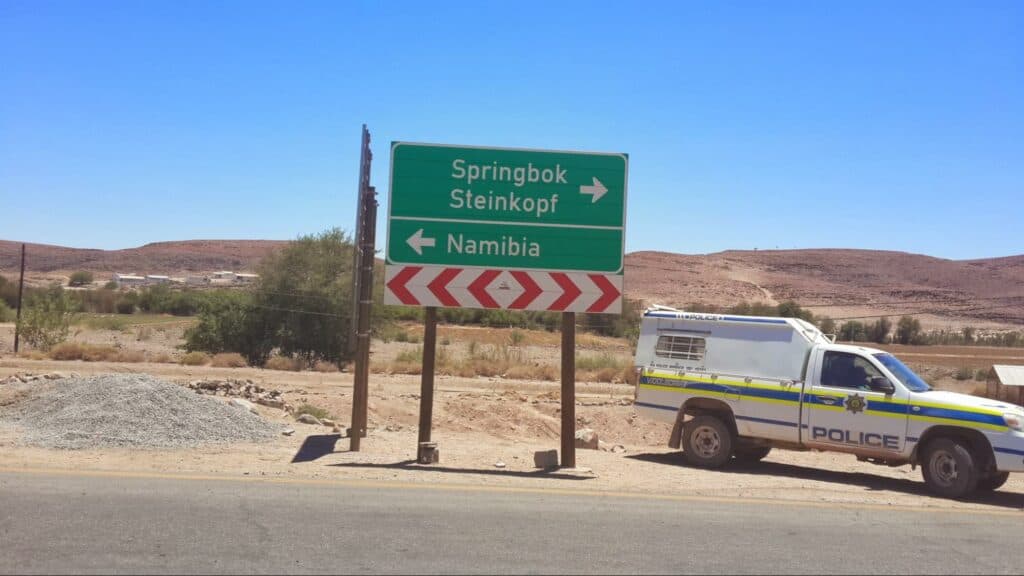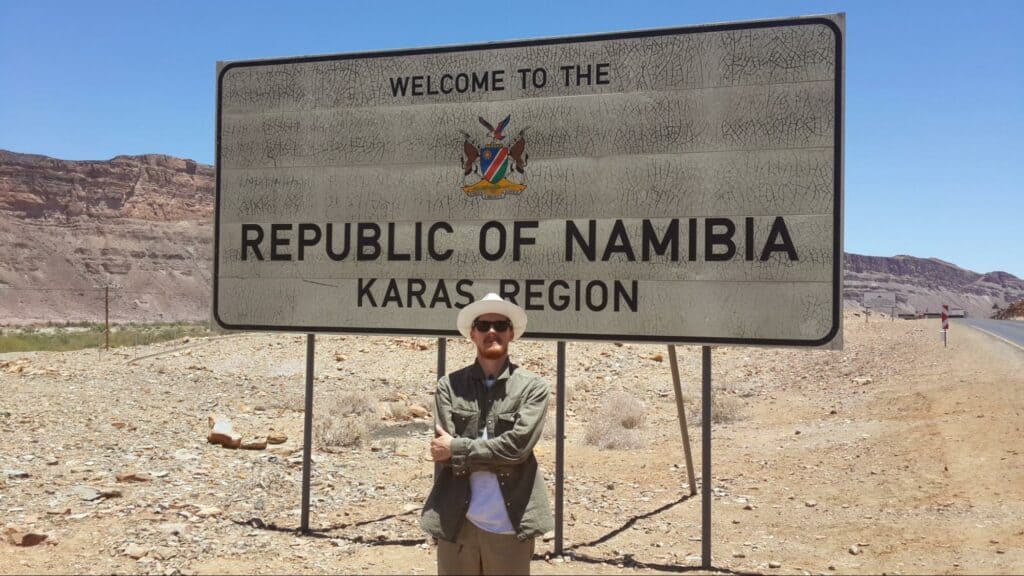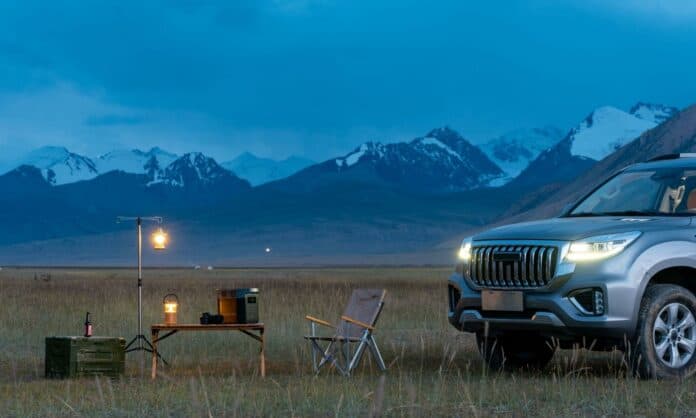Table of Contents
The Rainbow Nation is well-known for being home to many of the most scenic driving and cycling routes in Africa…
Or, for that matter, the world!
From oceans and mountains to safaris and deserts, you’re spoilt for a choice — whether it’s a day trip along Chapman’s Peak drive to the Cape of Good Hope or an overland adventure from Cape Town to Namibia.
The Eastern Cape and Kwa-Zulu Natal also have plenty of stunning drives to offer—as does the rest of the country.
Keen to spot all of the Big 5 on a self-drive in Kruger Park?
We’ll show you the way.
If you’re feeling stuck in neutral because you’re spoilt for choice and you’re not sure which road to travel, prepare to put your pedal to the metal.
Get ready to discover the 5 best road trips in South Africa.
1. The Panorama Route
South Africa is rightly known for its coastal drives, but one of the best road trips you can take is through the mountain passes of the Panorama Route.
This stunning drive through Mpumalanga includes multiple points of historical interest and scenic beauty.
Highlights include the Lisbon, Bridal Veil, and Mac-Mac waterfalls, Bergvliet and Long Tom Pass, and Blyde River Canyon.
The unparalleled view of the Drakensberg from God’s Window can’t be missed.
You can do the Panorama Route in one day, but with so much to see, what’s the rush?
A two to three-day trip with stops in rustic towns like Hazyview, Sabie, and Graskop gives you the opportunity to make the most of this magnificent trip through the heart of the Rainbow Nation.
With so many photo ops on the way, you will want to ensure your digital cameras and phones stay charged on the road.
EcoFlow RIVER 2 Pro is the ideal compact power solution for 1-3 day road trips.
2. Chapman’s Peak Drive, Western Cape
The Western Cape is home to many of South Africa’s most scenic routes — none more spectacular than Chapman’s Peak Drive.
Starting from the Gardens district of Cape Town, you’ll drive between the feet of Table Mountain and Lion’s Head and head along the coast.
The first leg of the trip is along Camps Bay Drive, where you can gape at the 12 Apostles rock formations en route to Hout Bay Harbour.
Once you pass through Hout Bay, past the Chapman’s Peak Hotel, you’ll come to the Drive’s gate.
Chapman’s Peak Drive is carved out of the sheer rock face and lacks guardrails and lamps for much of the road.
Watch out for cyclists – Chapman’s Peak is one of the most popular cycling destinations in the world, and you’ll soon see why!
There are many hairpin turns to navigate, and driving it at night is not recommended.
Besides, you’d miss all the views!
One breathtaking moment occurs when you approach Noordhoek.
The reveal of the beach on the passenger side is epic and not to be missed.
From Noordhoek, keep driving towards Simons Town and make a stop at Boulders Beach to say howzit to the penguins.
From there, it’s a straight shot to the Cape of Good Hope.
Part of Table Mountain National Park, the Cape of Good Hope is home to a gorgeous scenic lookout as well as inquisitive baboons and standoffish ostriches.
Cape Point is near the southernmost point of Africa, Cape Agulhas, where the Indian and Atlantic oceans meet.
It’s a 1.5km drive from Good Hope.
The scenic drive along Chapman’s Peak Drive to Cape of Good Hope and back to Cape Town can easily be completed in one day — if you get an early start.
3. Route 62
Better known as the “World’s Longest Wine Route,” Route 62 stretches along the Eastern and Western Cape, making it a far more picturesque alternative to the N2.
Tastings at Wine Farms and driving aren’t necessarily the best combination.
If you plan to imbibe, it’s best to book accommodation in Robertson or Tulbuagh and take cabs or a winery tour from there.
Now that we’ve got that formality out of the way, there’s much to look forward to on a Route 62 road trip besides wine and food.
Check out the thermal baths in Montagu or hike through Barrydale or Ladismith.
There are many small towns and scenic lookouts along the way.
Frequently compared to America’s Route 66, Route 62 links Cape Town in the west to Port Elizabeth in the east.
4. Kruger Park Self-Drive Safari
Ready to see the Big 5?
If you’re dying to view African lions, leopards, elephants, rhinoceros, and Cape buffalo in the wild from the safety and comfort of your vehicle, there’s no better place than Kruger Park.
And it’s not just the Big 5.
Kruger is also home to cheetahs, antelopes, Kudu, zebras, monkeys, wild dogs, baboons, Impala, and hippos — not to mention abundant bird, reptile, and plant life.
Kruger offers many self-drive safaris that give you and your family multiple chances to spot game in a protected environment — safe from hunters and poachers.
Game drives are best in the early morning and late afternoon.
It’s hot during the day, and the animals rest.
You don’t have to stay in your car the whole time. There are multiple “get-out points” throughout the park, where you’re encouraged to wander around and take in the sounds of the bush.
Drive slow and toss away the checklist.
One of the best parts of going on safari is the unpredictability.
You may not see a lion kill or tick off every mammal on your list on Day One.
But you can always come back.
For the best experience, don’t forget:
- Insect repellent
- Torch
- Digital camera
- Map
- Binoculars
- Portable power station for phone charging, etc.
- Water and snacks
5. The Garden Route, Western Cape
Called “The Ultimate Road Trip” by National Geographic, the Garden Route from Mossel Bay to Storms River has you journey along the Indian Ocean coast through George, Knysna, and Plettenberg Bay.
You can comfortably do the drive from Cape Town to Storms River and back in 2-3 days — but why rush?
Wilderness (an aptly named village), The Crags, and Keurboomstrand — as well as the major towns listed above — are all worthy of spending a night or longer.
Take your time on one of the most spectacular coastal drives in the world.
6. Cape Town to Namibia
Most of the road trips we explored above can be driven in a day or two…
In the mood for a longer trip?
The Cape Town to Namibia drive involves a border crossing and can take up to two weeks — or longer if you want to take your time.
There’s certainly a lot to see on the way!
Casual trekkers often choose to rent a vehicle, drive one way from Cape Town to Windhoek and then fly back.
But if you’re overlanding in an RV or 4×4, why not make it a round trip?
There are long stretches of road in the Namibian desert where you won’t see a service station — or even other drivers — for extended periods.
If you’re heading to either country’s more remote parts, a robust off-grid power solution is a must in case of emergencies and for your overall comfort.
EcoFlow DELTA 2 Max can recharge on the go with the 800W alternator charger, making it ideal for extended overland treks.
The drive from Cape Town to Windhoek is approximately 1,500 km via the N7 and B1 — or about 15 hours, depending on traffic.
If you’re looking to explore more of Namibia, the northwest of the country is spectacular, particularly the Caprivi Strip.
Here’s our suggested route, step-by-step:
- Leg 1: Cape Town to Paternoster: Take the N1 out of the Mother City centre through Woodstock and head towards Milnerton. The turnoff for the N7 is at a roundabout just past Century City — don’t miss the robot!
Follow the N7 and take the turn towards Melkbossstrand and the R27.
Paternoster and Langebaan are lovely fishing villages, and both offer great accommodation and restaurant options for the first night of your trip.
- Leg 2: Namaqua National Park: Once you get back on the N7, head toward Namaqua National Park.
Right in the heart of the Karoo, Namaqualand is home to over 1,000 plant species found nowhere else on earth.
If you’re up for camping in a tent or in your RV, you can choose between GroenRivier Coastal or Skilpad Rest Camps to put your head down for the night.

If camping or self-catering isn’t your thing, Hondeklip Bay or the town of Springbok are a short distance from the park.

- Leg 3: Vioolsdrif to Fish River Canyon: The morning after you stay at the park, get back on the N7 towards Vioolsdrif.
A road bridge over the Orange River connects the N7 to the Namibian border town of Noordoewer.
There’s little reason to linger in Noordoewer.
Instead, head toward Fish River Canyon — and be prepared for some spectacular views!
First, stop for lunch at the Canyon Roadhouse on the way to Hobas.
(Source: Canyon Roadhouse)
The Roadhouse is a sight to see in itself — and the food is excellent particularly the Amarula Cheesecake!
From the Roadhouse, it’s only a short distance to Fish River Canyon.
You’ll want to take some time to enjoy the views.
If you’re feeling adventurous — and conditions permit — you can do the famous Fish River Canyon hike.
Fish River Canyon is second only to the Grand Canyon as the biggest canyon in the world.
You’ll likely see wild horses, abundant bird life, and lizards on the trail.
But it’s not a short walk.
Most people take at least three days to hike the canyon, though four is recommended.
It’s not prohibitively challenging physically, but you should be an experienced hiker to take on the trip.
If a four-day hike isn’t your style, camp at the top of the canyon or spend the night nearby in comfort at the Canyon Lodge.
- Leg 4: Lüderitz and Kolmanskop: Once you’ve had your fill of Fish River, head north towards Luderitz and Kolmanskop.
Lüderitz is a rarity in that it’s both a desert and a seaside town well-known for its seafood, kitesurfing and extremely dry climate.
Kolmanskop is a “ghost town” that once was part of the diamond rush but has been reclaimed by the desert sand.
It’s an exceptional spot for taking haunting photographs and seeing an abandoned way of life preserved in the desert.
| (Credit: Axel Tschentscher, Wikimedia Commons) |
- Leg 5: Sossusvlei: Namibia is perhaps best known for its stunning red dunes and Sossusvlei is where you’ll find them.
The dunes are amongst the world’s highest at up to 400M in height.
Dune 45 (pictured above) is known as the most hiked — and photographed — dune in the world.
You can even take a hot air balloon ride and soar high above the dunes for unique look at one of nature’s wonders.
Sossusvlei offers multiple accommodation options, from tent and car camping sites to luxury resorts.
- Leg 6: Windhoek and Beyond! Whether your Cape Town to Namibia road trip ends here or you’re heading further north to Etosha National Park, the capital city of Windhoek is a must-stop on your journey.
Windhoek is Namibia’s most vibrant city, with African- and European-influenced architecture and culture.
If you’re ready for some nightlife and city vibes after your long haul through the desert, stay in Windhoek for a couple of days — either before you head back to Cape Town or journey on to the “eerie, lunar, nothingness” of the Skeleton Coast.
Hit the Road!
Eager to embark on your South African road trip?
It’s a magnificent country with many routes to explore…
You can’t go wrong picking one from this list.
No matter where you’re trekking, preparation is the key to a successful trip.
EcoFlow’s portable power stations, like River 2 Pro, provide off-grid electricity so you can keep all your devices charged and ready on the go.
Check out EcoFlow’s recreational off-grid power solutions today and make the most of your road trip!
